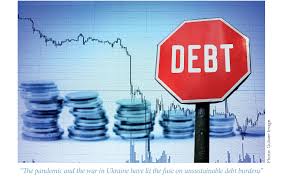ISLAMABAD, Oct 18 (INP-WealthPK): Satellite imagery is being increasingly used to better understand different economic indicators as the method is cost-effective and brisk compared to the costly and time-consuming manual household survey.
Economic data can be derived from satellite images by applying features related to economic indicators, reports WealthPK.
Talking to WealthPK in this regard, Usama Ahmad, Coordinator of the National Centre for GIS and Space Application (NCGSA), said that they were planning to develop tools that would assist the government and non-governmental organisations in assessing the economic well-being of the people using satellite and aerial images. “These tools will help overcome the challenge of conducting costly and time-consuming manual surveys.”
According to him, satellite images can be obtained from the Pakistan Space and Upper Atmosphere Research Commission (SUPARCO). “These images can be used to fetch a variety of economic indicators.”
He said that these indicators included poverty estimation, economic growth, identification of slums, population expansion, road structure, urban and rural structural development, agricultural areas, animal migrations, and natural disasters.
He said that the analysis of these indicators would not only help the government design policies, but would also serve as vital tools for businesses to understand their customers, design their business strategies and evaluate their business models.
Usama Ahmad asserted that poverty reduction remained a primary goal for policymakers, but progress towards achieving this goal had been rather slow as ambitions often exceeded the capacities. “Government agencies cannot collect such comprehensive data through conducting field household surveys. However, less traditional data collection sources like satellite images can be really helpful in this respect.”
The NCGSA coordinator said the use of satellite imagery could help identify rich and poor specific locations developed over time.
He said economic growth was another significant variable in measuring economic progress. “Changes in the intensity of night-time lighting are frequently tracked through satellite imagery for measuring economic growth of any area. Similarly, land cover changes may indicate shifts in industrial activity or agricultural output.”
He explained that computer vision and machine learning techniques were being used to detect residential areas. However, he said to enhance the efficiency of data, it was also possible to combine image data with geospatial datasets to determine the density of buildings, their proximity to parks and population concentration to secure a good accuracy of the target dataset problem rather than just concluding results from images.
Usama Ahmad said mapping through satellite and geo-spatial datasets was a cheap and scalable method to map economic indicators around the country. “This method helps organisations distribute money more efficiently and policymakers to make and evaluate policies effectively.”
However, he said that the utility of manual data collection on several variables could not be ignored as these could not be addressed with satellite technology. “A combination of satellite and manual data can be effective for data collection.”
Satellite imagery techniques based on machine learning provide significant insights into the state of the economy. This technology is still in its infancy, but it has already been used to track the recovery of the US housing market following the 2008 financial crisis and to forecast China’s economic development, Usama Ahmad pointed out. He said that this technology could be used in the future to monitor economic activity in real time and provide early indications of an economic downturn.

























